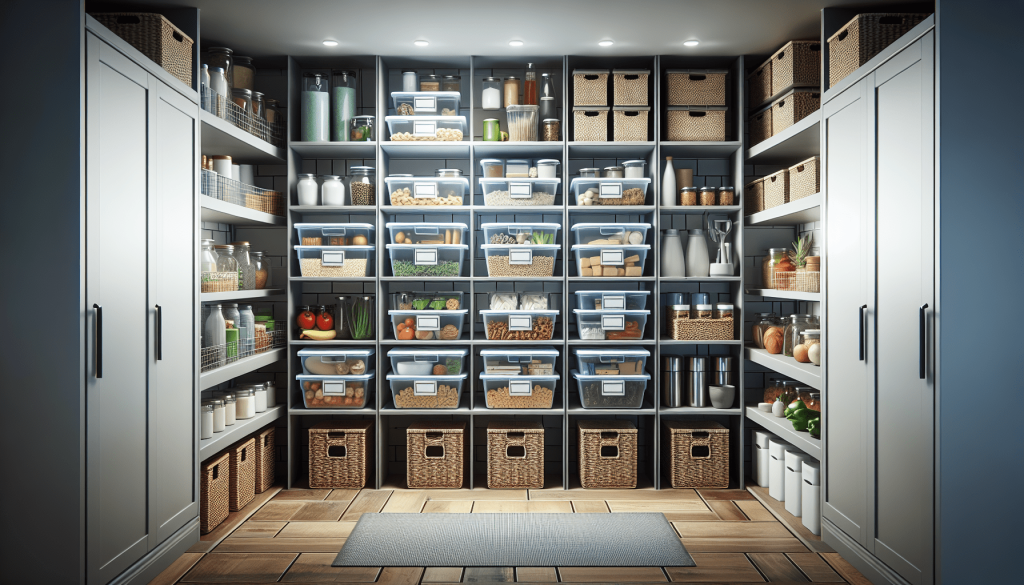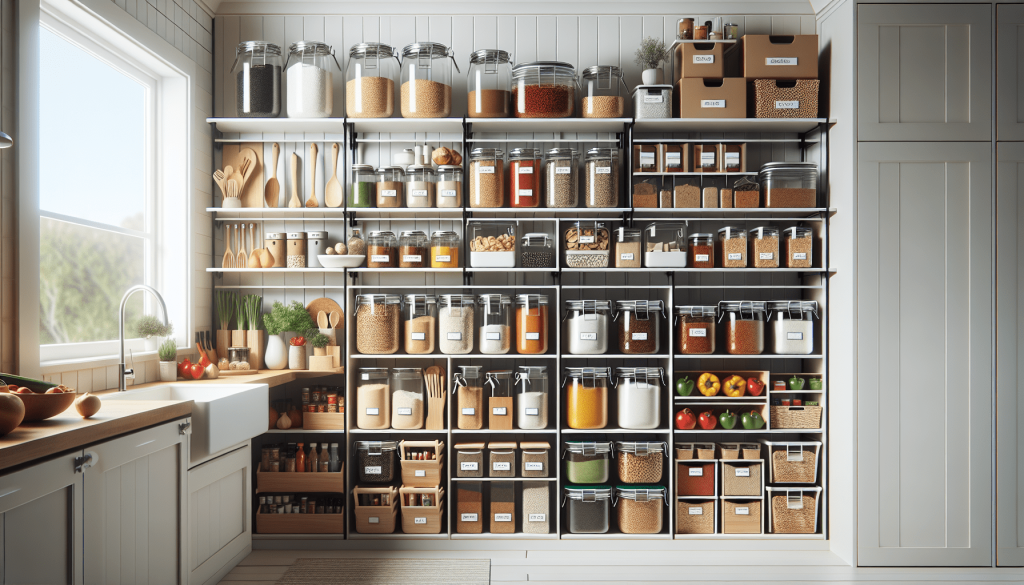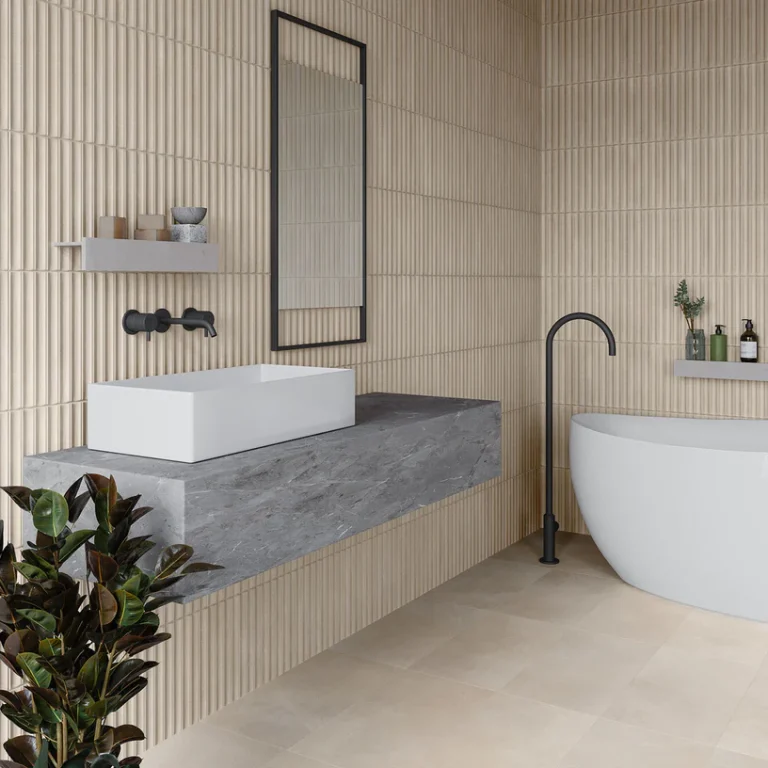Imagine stepping into your kitchen and feeling a sense of calm and control as you open the doors to your perfectly organized and functional pantry. With everything neatly in its place, your cooking and meal prep become a breeze, and you no longer have to spend precious time searching for ingredients or dealing with cluttered shelves. In this article, we will explore some practical tips and strategies to help you create a pantry that is not only beautiful but also efficient and easy to maintain. Get ready to transform your pantry into a space that will make your heart sing and your culinary adventures a true pleasure.
Table of Contents
ToggleEvaluate and Plan
Assessing your pantry space
Before you begin organizing your pantry, it’s important to assess the space you have available. Take some time to measure the dimensions of your pantry and take note of any odd angles or corners that may affect your layout. This will help you determine what storage solutions and organizing systems will work best for your specific space.
Identifying your needs and goals
Next, think about your needs and goals for your pantry organization. Are you looking to maximize storage space, improve accessibility, or simply create a more aesthetically pleasing pantry? Are you dealing with limited space or a large pantry that needs better organization? Understanding your needs and goals will guide you in creating the most effective organization system for your pantry.
Creating a pantry layout
Once you have assessed your pantry space and identified your needs and goals, it’s time to create a pantry layout. Start by drawing a diagram of your pantry and determine where you want different categories of items to be stored. Consider factors such as frequency of use and accessibility when deciding on the location of each category. This layout will serve as a blueprint for organizing your pantry and help you visualize the end result.
Clear and Clean
Remove everything from the pantry
To start the organization process, remove everything from your pantry. It’s easier to declutter and clean when you have a blank canvas. Take this opportunity to thoroughly clean the shelves, walls, and floor of your pantry.
Declutter and discard expired items
As you remove items from your pantry, take the time to declutter and discard any expired or unwanted items. Check the expiration dates on canned goods, spices, and other perishable items. Dispose of anything that is past its expiration date or no longer safe to consume.
Deep clean the pantry
After decluttering, take the time to deep clean your pantry. Wipe down the shelves, walls, and floor with a cleaning solution. Pay attention to any stubborn stains or sticky residue, and make sure to thoroughly dry the pantry before proceeding with the organization process.
Categorize and Group
Sort items into categories
Once your pantry is clean and empty, it’s time to sort items into categories. Group similar items together, such as canned goods, pasta and grains, spices, baking supplies, snacks, and so on. This will make it easier to find what you need later on.
Group similar items together
Within each category, further group similar items together. For example, within the canned goods category, separate vegetables, beans, and soups. This extra level of grouping will help you maintain a more organized pantry and make it easier to find specific items.
Consider organizing systems
Consider implementing organizing systems in your pantry to further enhance its functionality. This could include using stackable containers for snacks, using magazine holders for storing canned goods, or utilizing small bins for organizing spices. These systems can help you optimize your pantry space and maintain a more organized layout.
Storage and Containers
Choose appropriate storage solutions
When it comes to pantry organization, choosing appropriate storage solutions is key. Opt for clear containers to store dry goods, as they allow you to easily see what you have and when it needs to be replenished. Use larger airtight containers for items like cereal, pasta, and rice, and smaller containers for spices and condiments. Consider investing in bins or baskets for storing snacks or individually packaged items.
Utilize bins, baskets, and organizers
Bins, baskets, and organizers can be incredibly useful in creating an organized pantry. Use them to group similar items together and keep them neatly organized. Store snacks or small items in bins or baskets, and use drawer organizers to keep items like measuring spoons and kitchen gadgets easily accessible.
Label containers and shelves
To maintain a well-organized pantry, labeling is essential. Label your storage containers and shelves so you and your family members know exactly where things belong. This will not only help you stay organized, but also make it easier to find specific items, especially when you’re in a hurry.
Shelving and Racks
Adjust and optimize existing shelves
Take a look at the existing shelves in your pantry and consider if any adjustments can be made to optimize the space. Move shelves up or down to accommodate taller or shorter items. If your shelves are adjustable, take advantage of this feature to create customized storage for your pantry items.
Consider installing additional shelves
If you find that you need more storage space in your pantry, consider installing additional shelves. This could be as simple as adding wire or wooden shelves to unused wall space or investing in a freestanding shelving unit. Extra shelves will provide more storage options and help keep your pantry organized.
Use wire racks for convenient storage
Wire racks and baskets are excellent tools for creating additional storage in your pantry. Attach them to the back of your pantry door or hang them on the walls to store items like spices, condiments, or small jars. These racks can also be used for storing cleaning supplies or kitchen tools, maximizing the space in your pantry.
Maximize Vertical Space
Utilize the back of the pantry door
Don’t overlook the back of your pantry door as valuable storage space. Install hooks or racks on the door to hang items like aprons, oven mitts, or even lightweight pantry essentials. This allows you to free up shelf space for other items while keeping frequently used items easily accessible.
Install hooks and racks for hanging storage
In addition to the back of the pantry door, consider installing hooks and racks on the walls or inside cabinet doors. These will provide convenient hanging storage for items like mugs, kitchen utensils, or even pots and pans. This creative use of vertical space can help declutter your pantry and create a more organized and functional kitchen.
Use tension rods for added shelf space
Tension rods can be a game-changer when it comes to maximizing vertical space in your pantry. Install tension rods between shelves to create additional surfaces for storing lighter items like cutting boards, baking sheets, or trays. This simple trick can instantly create more storage options in your pantry.
Utilize Clear Containers
Transfer dry goods into clear containers
One of the easiest ways to create a more organized and visually appealing pantry is to transfer dry goods into clear containers. This not only allows you to easily see what you have but also helps maintain the freshness of the food. Use airtight containers for items like flour, sugar, pasta, and cereal, and label them for easy identification.
Label containers for easy identification
Labeling your clear containers is crucial to maintaining an organized pantry. Use labels or a label maker to clearly mark the contents of each container. This will make it easy for you and your family members to find what you need without having to open every container.
Maintain food freshness and visibility
Clear containers not only make it easy to see the contents of your pantry but also help maintain the freshness of your food. By transferring items into airtight containers, you can protect them from moisture, pests, and other factors that can compromise their quality. This will ensure that your pantry staples stay fresh and ready to use.
Smart Organization Tips
Arrange items by frequency of use
When organizing your pantry, consider arranging items based on their frequency of use. Keep frequently used items within easy reach, either at eye level or at a waist level. Items that are used less frequently can be stored on higher shelves or in the back of the pantry.
Consider using lazy susans and turntables
Lazy susans and turntables are excellent tools for creating easy access to items stored in the corner of your pantry. Use them for storing spices, oils, or condiments, as they allow for quick and easy rotation to find what you need. Lazy susans and turntables can also be used on deeper shelves to maximize accessibility.
Implement a first-in-first-out system
To minimize food waste and ensure that you use your pantry items before they expire, implement a first-in-first-out system. When you restock your pantry, place newly purchased items at the back and move older items to the front. This way, you are more likely to use the oldest items first, reducing the risk of food going to waste.
Maintaining Order
Regularly check and rotate items
To maintain an organized and functional pantry, regularly check and rotate your items. Take a few minutes each month to go through your pantry, checking for any expired or soon-to-expire items. Rotate the older items to the front and move newer items to the back. This practice will help you avoid spoilage and keep your pantry well organized.
Clean and organize the pantry periodically
In addition to rotating items, it’s important to clean and organize your pantry periodically. Take the time to wipe down shelves, remove any spills or crumbs, and reorganize as needed. This will keep your pantry looking tidy and make it easier to find what you need when you’re cooking or baking.
Keep a shopping list within the pantry
To ensure that you never run out of pantry staples, keep a shopping list within your pantry. Attach a small whiteboard or notepad to the inside of the pantry door where you can jot down items that need to be replenished. This way, you can easily check the list before grocery shopping and avoid any last-minute pantry shortages.
Easy Accessibility
Arrange frequently used items at eye level
When organizing your pantry, prioritize easy accessibility for frequently used items. Place them at eye level, within reach, so you can quickly grab what you need while cooking or baking. This will save you time and effort, creating a more efficient and enjoyable kitchen experience.
Store heavy items at waist level
For safety reasons, it’s best to store heavy items at waist level in your pantry. This reduces the risk of injuries when lifting or carrying heavy containers or appliances. Keep things like bags of flour, large bottles, or heavy kitchen tools at a comfortable and easily reachable height.
Designate zones for different types of items
To create an organized and efficient pantry, designate zones for different types of items. For example, have a baking zone where you store all your baking ingredients and tools, a breakfast zone for cereals and coffee supplies, and a snacks zone for chips and cookies. This will make it easier to locate items and maintain order within your pantry.
By following these steps and implementing the tips provided, you can create a functional and organized kitchen pantry that will make your cooking and meal preparation a breeze. Take the time to evaluate your pantry space, clear and clean, categorize and group items, choose appropriate storage solutions, optimize shelving and racks, maximize vertical space, utilize clear containers, implement smart organization tips, maintain order, and prioritize easy accessibility. With a well-organized pantry, you’ll be able to find what you need quickly, reduce food waste, and enjoy a more efficient and enjoyable cooking experience.








